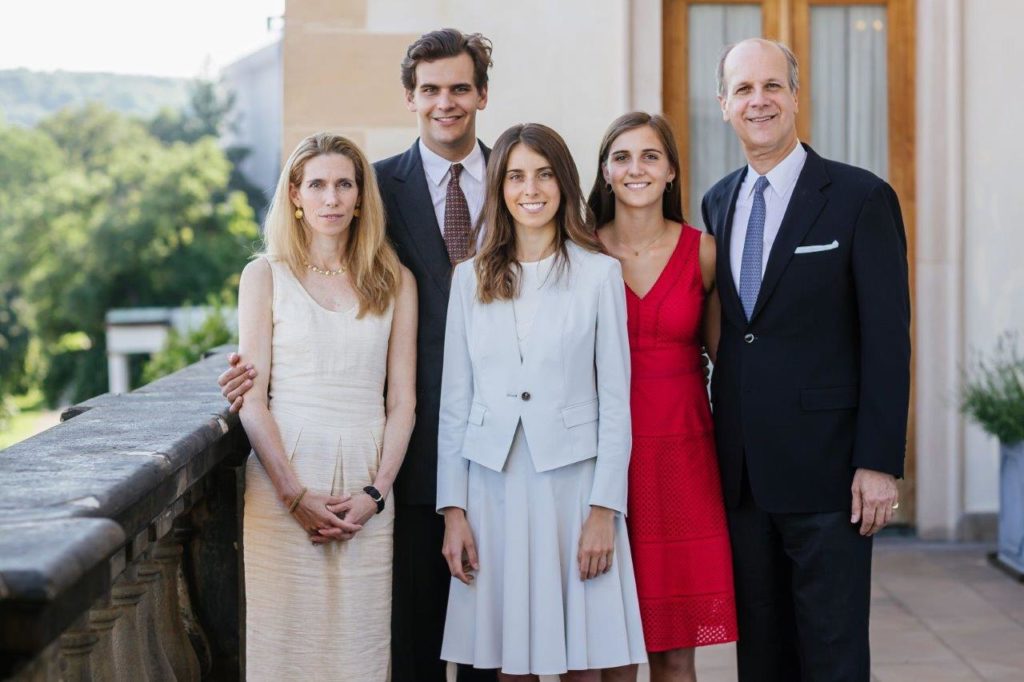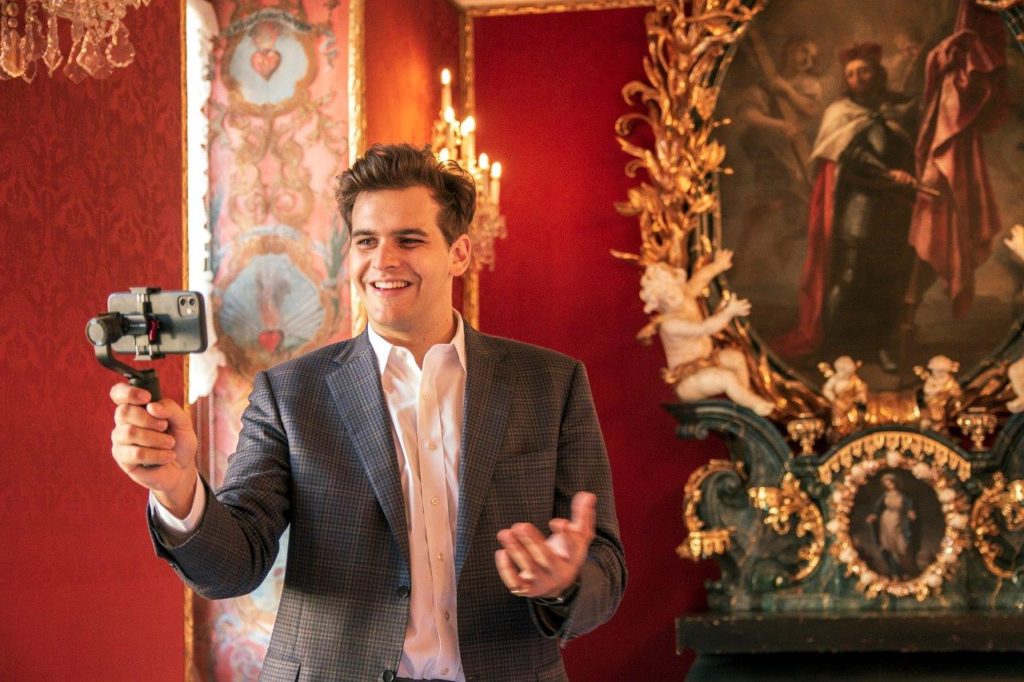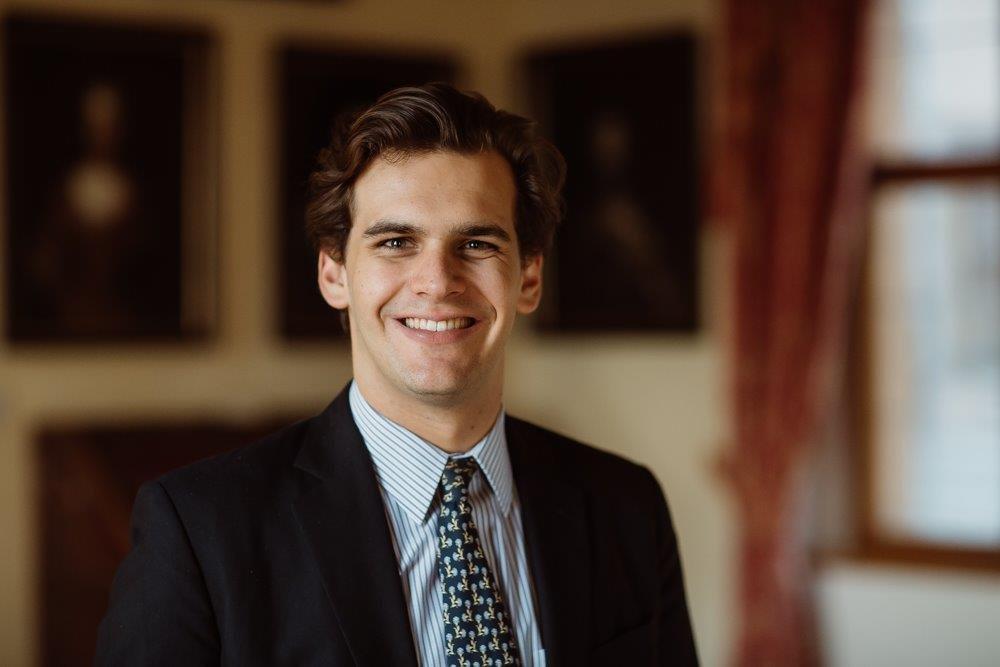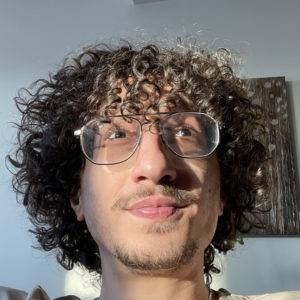Conducted, recorded, and transcribed by Rami Al-Sabeq

Photo Credit: Lobkowicz Collections
Rami: This is an incredible event you’ve set up, with incredible panels of speakers; what was your motivation in setting this up? You mentioned it was only initiated about two months ago, so tell me how that started.
William: Well before we fully went into the space, we’ve really been exploring it for the last 8 months, and we’ve realized there’s so much that we need to learn. We are trying some different things, and we’re really experimenting, and are learning along the way, and the way we wanted to do this was by first trying this out from a digital perspective, putting together an exhibition that would showcase pieces that we would experiment with and see whether there would be any appetite or interest in it whatsoever, whether it could be creating a community around these collections.
We also wanted to, in that exhibition, showcase pieces that were inspired by the collections so that our collections can be a bridge between the past and the future so that we can share the past and create our future.
Rami: It’s amazing that you do that, there are people who would view that as ‘no you’re trying to take my hype’, or ‘take that away from me.’ So, you’re making it a phenomenon instead of a fad.
William: Yes! It’s open-source nobility. That’s the whole idea with this. I don’t want these just to be sitting on the wall, I want to inspire people to create further. This is nothing new necessarily in the canons of art history. You’ve seen we have a painting by Diego Velasquez upstairs…
Rami: I’m very excited to see it!
William: Beautiful! Yeah and it also inspired people like Dali and Picasso who created their own renditions of that.
Rami: Oh I didn’t know that!
William: Yeah and those pieces are incredibly valuable too. At the time, people said this was too avant-garde, you know, you’re completely going against the old established art world, and today they’re some of the most important pieces in the world. So I think we’re at kind of a critical junction here where we could see that happen. And even with the pieces that have been created that are inspired by the collections, we wanted people to experiment with how they would do that.
So we have one piece by Matthew Stone which is inspired by Cabinet of Curiosities, the painting that you actually see side by side next to the new work. And then we have another piece by the collective ArtiObvious which works with generative art. And this is something that sparked quite a bit of debate in the traditional art world, whether generative art is actually considered art. Whether there is actually artistry in the algorithm or the equation that holds these things together.

Photo Credit: Lobkowicz Collections
Rami: What do you think about that?
William: I actually think there is quite a bit of artistry that goes into it, personally, but I didn’t know as much about it actually. And it was only after engaging with these artists and learning more about their craft and how they do it, that I can see there’s actually a sort of poetry inside. And so what we did with them is we said “okay, well why don’t we take pieces that are not normally seen by the public that are in our archive, and we gave them 250 maps that were part of this large collection, and they created a new generative art piece that’s completely animated and completely different.
Rami: Oh very cool!
William: So that was really fun to see. And then obviously we’ve been working with people like Mitchell Chan as well who shared his IQB piece. We were really excited that he could speak on the first panel to talk a little bit about that, and to talk about how this concept of NFTs isn’t something that’s entirely novel; it’s something that’s been explored over the last six hundred years. And then PleasrDAO, and it’s really interesting working with DAOs because it’s a new form of governance that can help dictate how we display things in the future; what we choose to support or be philanthropic about. And the piece that we have loaned by them, Stay Free by Edward Snowden, is really interesting as a philanthropic piece because it showcases how all of the sales from that piece went to journalistic freedom, and that was a cool use case for us too.
And then with the forum, our idea was to gather some of the greatest minds from the crypto community and from the fine art community so that they can start having a little bit of a conversation with one another about what are the ways we should be moving forward in this space. So it’s an experiment, we’re learning, and before we go fully into it, I think it would be irresponsible not to learn from the best people in this space. I mean, we’ll hopefully create a better product for people in the future, and something that will help connect people with these collections so that they survive through the future.
Rami: Yeah! And that’s a very down-to-earth way to look at it. Not assuming that you know how to succeed or that you don’t need the buy-in of the community, or that you can do this by yourself. I really respect the collaborative approach and the discussion you’re promoting as a result instead. And you mentioned something about generative art expanding your perspective on what art is, and I just wanted to talk about that a little bit more. Have NFTs done that in an even greater way? Beyond generative art, have you expanded your definition of art at all?
William: Absolutely. I think I’m interested in NFTs not only just from the artistic standpoint, but also how these tokens can create different forms of our proof-of-patronage series, which talks about philanthropy. But from an artistic perspective, I’m quite interested in how artists can now utilize these digital tools to showcase their works that previously weren’t able to be used. As technology has progressed over the years, even in art history, you’ve seen that as people can use different paint pigments or start gilding in a separate manner or use different glues that were developing, you’d see this progression in technology and a progression of the art. The same thing is happening right now with digital tools that we have at our disposal; the types of 3D modeling that you can create, the animations that can come from them, and while this is a departure from what we deem as ‘traditional,’ I think it’s a huge step forward for the different ways that we can see art and interpret it.
Rami: That’s amazing, and it reminded me of something your father said earlier about Beethoven and him redefining the music genre when he put that symphony out. And it’s always that this innovation in art is treated with what you called this avant-garde reaction, and we’re experiencing it here today, it’s just part of history. But how do you feel about that? Your family has been benefactors of the arts for a very long time, so do you feel this is something that’s in your nature to meet head on?
William: When I think about my ancestors, every one of them has faced a different moment in history that’s been difficult, or defining, or something that they’ve collected in a different way. The seventh Prince Lobkowicz actually bankrupted the family with his love for music. There were two fully working orchestras at the time just for the Lobkowicz family, and he made sure Beethoven had everything he needed in order to do his performances. And you were talking about the thing that was pushing the boundaries of that music; the Eroica Symphony, when it was first played, shocked and horrified people. There was famously a third French horn that was added to the orchestra which was seen as blasphemous. So upstairs you have these accounting records that showcase the first performance, how they added the third French horn, and I think they’re great ways of marking how there are untraditional moments in history and this I think is one of them.
But, later on we’ll see whether people will see it as another critical juncture and we’ll move forward. And again, I’m not sure. I will say that while there are amazing things behind this technology, I still think there’s some things that can be improved, and that’s the idea behind some of these panels that are here, facilitating an exploration of not just what are some of the wonderful ways in which we can utilize this technology, but what are some of the problems that we’re seeing arise and how do we operate responsibly in this space where we’re not following a hype cycle, where we’re creating an example of not just how we can operate in this space, but an example hopefully for other cultural institutions and nonprofits in the future. Everything we’re doing here is for public benefit, and I think that can often get misconstrued. Obviously, we come from a bold, noble, princely family, and it’s often hard to communicate what goes into the restoration and conservation work we’ve been doing over the past 30 years. We’re not doing these things so we can drive around in Ferraris; we’re thinking about ways that we can preserve these collections that are in dire need of restoration.
And if you look at things like the pieces that we’ve put on display, that’s an example of a project where we need to raise about a million dollars to just redo the façade of the castle. And we do most of this with very little public funding, and we rely very heavily on key people to support those projects. But what’s interesting about selling an NFT like that is that future proceeds can go to that project for the restoration of very old artworks. And that thing is going to be an immutable asset that exists on the blockchain until the end of time. Any resales of that can continue supporting that project where we’ll be able to continue supporting these artworks which start to degrade after 30-50 years. So with the NFT pieces themselves, it’s not just about tokenizing the work of art and putting it up there. It’s about showcasing and educating people at the same time which is something we’re experimenting with. They’re directly derived from the original pieces but we’re not just scanning and shipping, we’re showcasing what you can see, what you can’t really see in the real world, and also helping to educate people and using it all for philanthropic purposes.

Photo Credit: Lobkowicz Collections
Rami: That’s amazing, and I think that philanthropic purpose is immense. I’ve actually written an article on this previously; how NFTs allow you to tell stories to the entire world but allow the ability for a collector to own them uniquely. In the article I wrote about a project recreating African masks that were taken away from Africa and creating them in 3D and putting them on the blockchain. And he’s doing it because he wants to tell the stories and doesn’t want to exclude anyone from being able to collect, and proceeds also go to philanthropic purposes. So the philanthropic purposes are immense, I really really appreciate you focusing on that, and that your statement before sets you up as promoters of the arts, you’re not looking to enrich yourselves, and I respect that. Is your motivation, do you think, purely ancestral?
William: My motivation behind this is I really just want to share these stories with as many people as possible, and that’s the mission of the collections, to preserve, study, and share them. I think this provides an opportunity to, beyond the financial aspect, let people know that we’re here, let people know that this isn’t just our cultural heritage, it’s your cultural heritage, it’s other people’s cultural heritage. And this is something we should be building off of and learning. We’re storytellers at the end of the day. We don’t see ourselves as owners, we’re custodians and we’re responsible for making sure that this cultural heritage lives on and we can continue sharing it. When you were mentioning the example of the African masks, I think that’s a perfect use case for what we should be doing in the future. Where you can tell the stories in these pieces and it doesn’t have to only be about ownership, it’s about showcasing art in different virtual galleries that can be shared by different people. If we get a community of people who have a sense of ownership in these collections, they’re going to spread the message about this as well, and if I’m thinking about the next generation and how we’re gonna survive, it took a pandemic for us to pause and think and say ‘how are we gonna survive in this world and move forward?’ A lot of people that go to museums today tend to be of an older age category, especially for an institution like ours which primarily features pieces that date back to the time of the Renaissance. And so, in order to stay relevant and for these things to be interesting to people, we have to adapt and we have to innovate. And in order to do that and to continue being a source of inspiration, I think this is a great way to do it.
Rami: Amazing. I have two more questions for you. How did you first learn about NFTs?
William: We started with virtual tours that we were doing during the pandemic and I enlisted a friend of a friend of mine, Michelle. She comes from a technological background, I’m a history, art history person, and we were just thinking of ways that we can support the collections during what was a very difficult time. And the other thing we were starting to see is that with our virtual tours that we had started, we were connecting to communities around the world. There were two million for my virtual tours from six different continents at the same time, which was a huge impact. With the development of that, I was getting messages from people who were saying, ‘I’m not able to travel to Prague due to financial reasons, but I appreciate being able to travel virtually.” In a world that’s becoming increasingly divided as well, we’re putting up borders due to COVID. We really wanted to think about ways to connect with communities to make everything work.
Rami: So what came first? Was it the “connecting” with communities, or the potential of NFTs to facilitate that?
William: It was connecting with communities first. Because at the end of the day, the virtual tours that we were doing were free to the public. We were really trying to, in the middle of a pandemic, struggling at home trying to think of ways that we can continue sharing culture and supporting people. We had Yoga classes in historical spaces as well.
Rami: That’s beautiful! I have one more question. You mentioned things that you see, and this conversation as part of advancing aspects of NFTs that can be improved. What are things that you see needing improvement, whether they have solutions currently or not. I’m just interested in what you see as being the gaps currently.
William: I see a lot of projects at the moment that have a large focus on monetary value rather than artistic value. I think we’re seeing a lot of things being defined as works of art that, again, beauty is in the eye of the beholder, but I do find that people sometimes have way too much of a focus on trying to create projects that generate income, rather than creating art for art’s sake. And that’s something that I really hope we’ll start working on and developing. And then there’s a lot of legal issues in the space as well, and governments figuring out now how they’re going to regulate this space. While there are very interesting use cases with fractionalization of NFTs that I’m interested in actually because it allows ownership in something where people who are financially unable to own something that’s of high value can also have a sense of ownership. But one thing that is interesting is whether this will continue, whether this will be something that is regulated in the future, and I’m not sure. We’re speaking in the middle of our panels right now but that’s one thing that’s going to be explored with our Legal panel, this is something we’re going to be discussing. I’m interested in that.
Rami: It’s very exciting, I think you bring up a great point. From my understanding, fractionalization does fall heavily into securities territory.
William: Correct.
Rami: And also distributing royalties to NFT holders, so those are things that infringe a little bit too much, but it’ll be amazing to hear that panel today and see what else they have to offer.
William: I mean there’s great value in these things, I think in the future it’s just a matter of how well we set up. I think there’s problems with the art world as well and a lot of them I can see being improved upon by utilizing some of this technology and the history of provenance that we can learn from. The transparency of transfer of assets, there’s some things that, if we don’t fall into the trap of focusing too much on trying to make a quick buck, we can think about how to sustainably do things. And we’re hoping from these panels that we’ll get some sort of an agreement from our speakers on what are the best ways that we can move forward and do so responsibly.
Rami: Fantastic. And you mentioned something about projects right now being focused too much on price, and this was something that was brought up, the art market is focused on price but the art culture is focused on value. I just wanted to say I appreciate this opportunity because I can look into your eyes, I can speak to you, and I can see where your passion is, and it really does seem like you are advancing the cultural component of it, so I really respect that.
For more information:
- Link to William Lobkowicz’s Twitter
- Link to Non-Fungible Castle website
- Link to House of Lobkowicz website


